WordPress is widely recognised for its flexibility, ease of use, and vast plugin ecosystem. Still, despite its strengths, WordPress can struggle with scalability, performance under heavy traffic, security, and the need for extensive customisation at an enterprise level.
For enterprise websites, looking for a robust, secure, and scalable CMS that provides enhanced features and customisation capabilities is essential. Ideally, you’ll need platforms that handle complex workflows, security compliance, and advanced content management. With growth, you’ll also require a CMS that can handle high traffic, advanced workflows, and custom integrations. WordPress might have excelled in helping you grow to a point, but if it’s becoming restrictive, this article should help find the right alternative platform for long-term success.
This article introduces the top enterprise CMSes that are alternatives to WordPress, analysing ratings, pricing, advantages and disadvantages.
Our post on Choosing an Enterprise CMS will give you more information on the areas to consider and where decoupled architectures shine.
Enterprise CMSes vs WordPress: what to consider
Sanity, Payload, Contentstack, Contentful, and other enterprise CMSes offer a headless architecture and robust API integration, enabling a more sophisticated approach to content management.
These CMSes streamline the collaboration between developers and content creators, allowing for quick distribution and consumption of content across omnichannel platforms. This contradicts WordPress's often cumbersome plugin model, leading to bloating and potential performance and security drawbacks.
Below are some considerations when selecting a CMS
Omnichannel with a headless CMS
Agility is a core requirement in enterprise-grade digital strategy. Traditional CMSes like WordPress, Wix, or Webflow can no longer match the fast-paced evolution of content consumption habits.
This is where headless CMSes, operating via an API-first approach, offer an edge. By decoupling the front-end presentation layer from the backend, a headless CMS like Payload CMS, Sanity CMS, or Storyblok allows your enterprise to innovate and tailor the digital presence for the users.
Security: Protecting enterprise data
Advanced security measures are built into the architecture of decoupled and headless systems, providing a less penetrable structure for data breaches. In the ever-present battle against cyber threats, WordPress has become an obvious target (mainly due to how successful it’s been and widely used) for attackers with its widespread use and reliance on numerous third-party plugins. Platforms like Vercel introduce a multitude of security features that you can integrate with headless CMSes.
Front-end user experience (UX/UI)
Optimising the front-end user experience is non-negotiable if your enterprise wants to stand out in the saturated market. A decoupled architecture offers the speed and flexibility required to create fast and intuitive experiences tailored to your brand. Leveraging a headless architecture provides design freedom and enhances website management capabilities, meaning updates can be published faster, giving enterprises the necessary responsiveness.
Content management and content modelling
At the core, a flexible Enterprise CMS (ECMS) for content modelling is essential because it enables you to develop a custom digital content structure to meet evolving audience needs. An enterprise-grade CMS provides better integration potential for third-party systems such as CRM platforms, ERP systems, and email marketing services. This creates a seamless and efficient workflow that adds value to your content ecosystem and saves time.
CMSes to consider when migrating an enterprise site from WordPress
When exploring alternatives to WordPress for enterprise applications, it is essential to identify CMSes that offer flexibility, efficiency, and a tailored approach to content management and delivery. Whether seeking a system with an API-first approach for a customised tech stack or aiming for a solution that provides excellent internal website management capabilities, your decision should align with your specific needs and project requirements.
CMSes to consider for your enterprise website build
Sanity.io: the best content management experience for enterprises
Rating on G2: 4.7
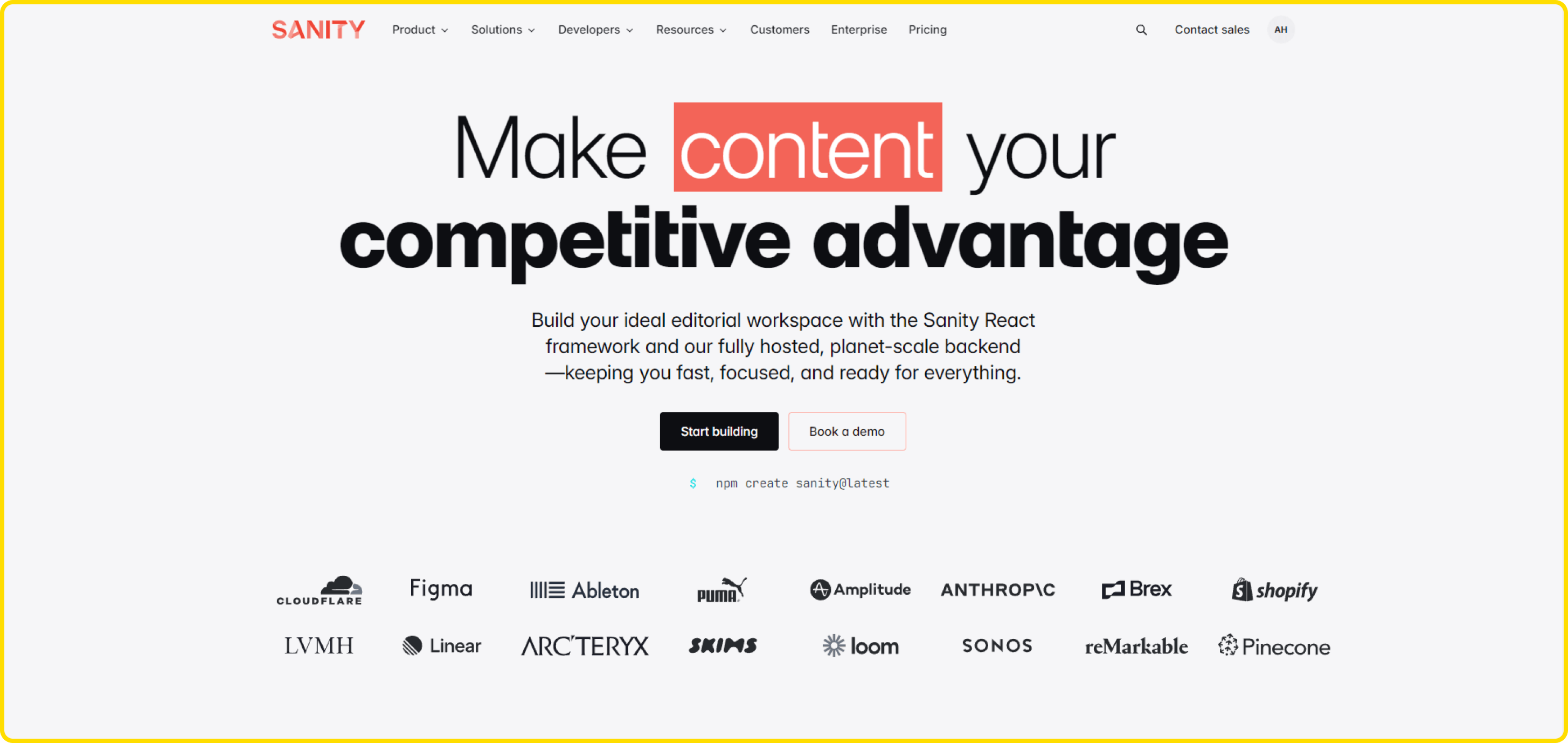
Sanity is an enterprise-grade headless CMS designed for structured content. It offers a flexible, API-first approach that enables scalable content delivery across platforms. Its composable content cloud treats content as data, allowing extensive customisation in content modelling and management. Sanity stands out with its fully customisable editor, real-time collaboration tools, and JSON-based rich text fields. It is ideal for enterprises aiming to create consistent, reusable, and data-driven content experiences. This makes Sanity a future-ready solution for agile, personalised digital strategies.
Sanity pricing:
- Free Plan: Suitable for small personal projects, with limited API requests and usage limits.
- Growth Plan: $15 per seat/month
- Enterprise Plan: Custom plan for organisations with complex security, support, and performance needs.
Pros & cons of Sanity:
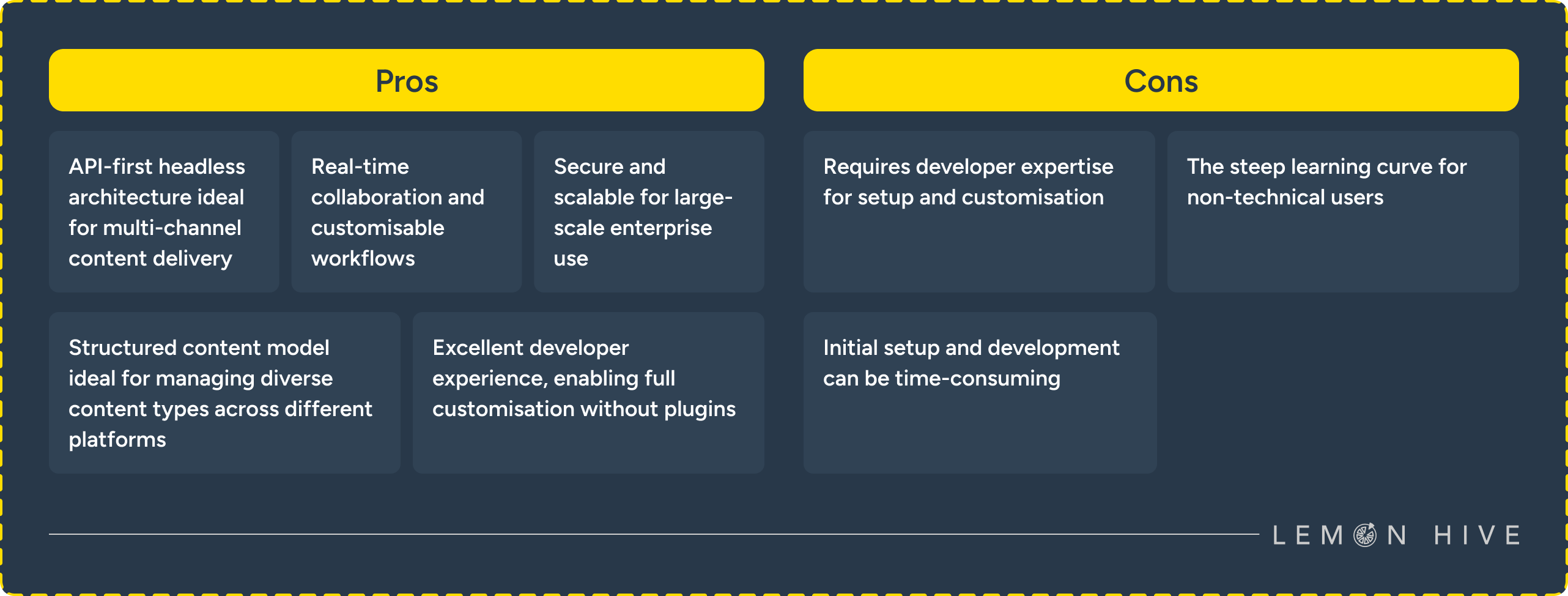
Payload CMS
Rating on G2: 4.8
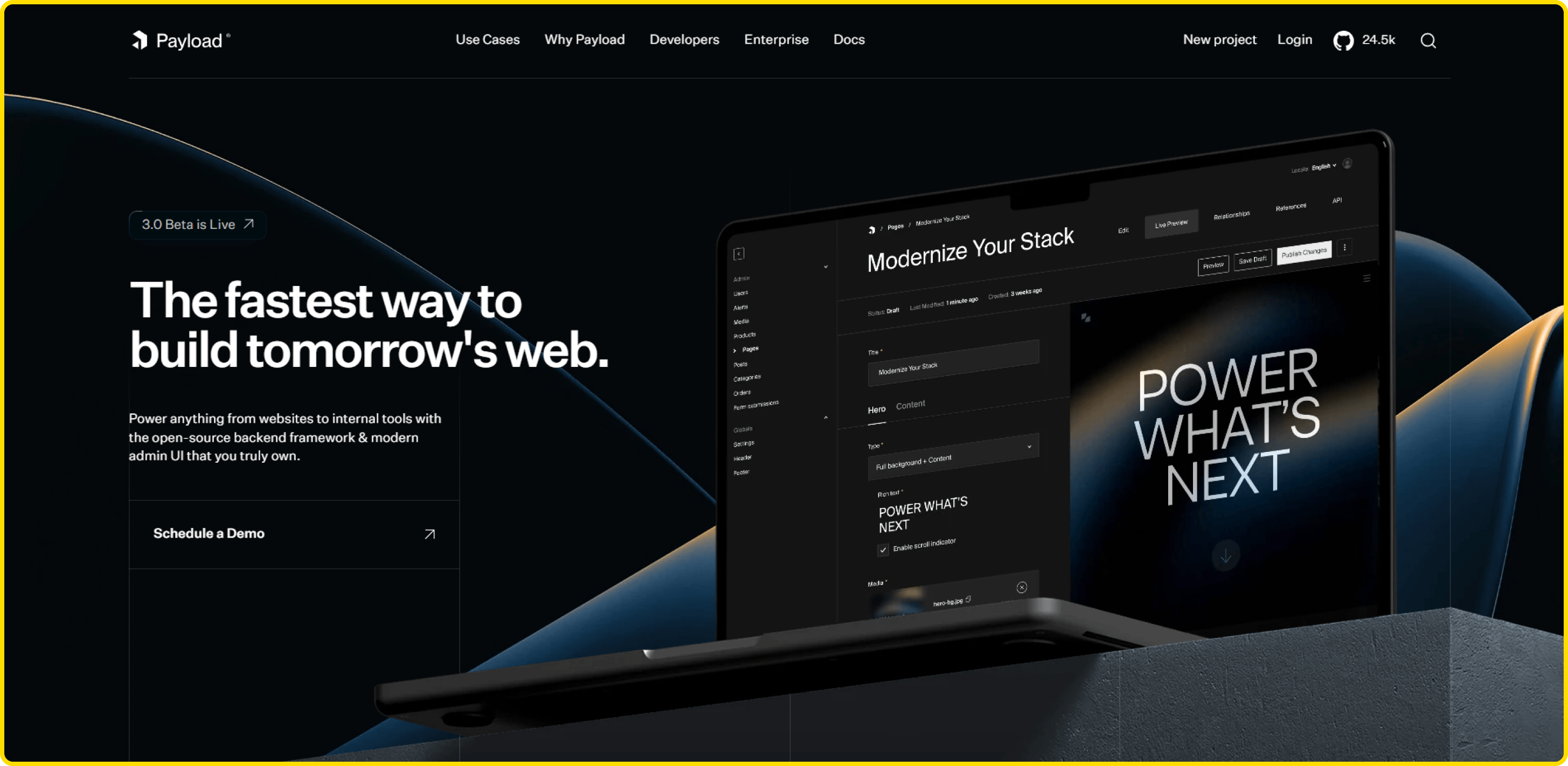
Payload CMS is a developer-focused, open-source, headless CMS designed for flexibility and customisation. Built with Node.js and React, it enables seamless integration with modern tools and frameworks, allowing developers to create dynamic, API-first content systems for any platform. Payload offers custom fields, flexible access control, and a robust admin panel, making it ideal for enterprises seeking control over content management in complex, large-scale projects.
Payload pricing:
- Open-source self-hosted: Free
- Payload Cloud Standard: $35/month
- Payload Cloud Pro: $199/month
- Payload Cloud Enterprise: Custom pricing for enterprises with large-scale, critical content infrastructure. Support, SSO and more.
Pros & Cons of Payload:
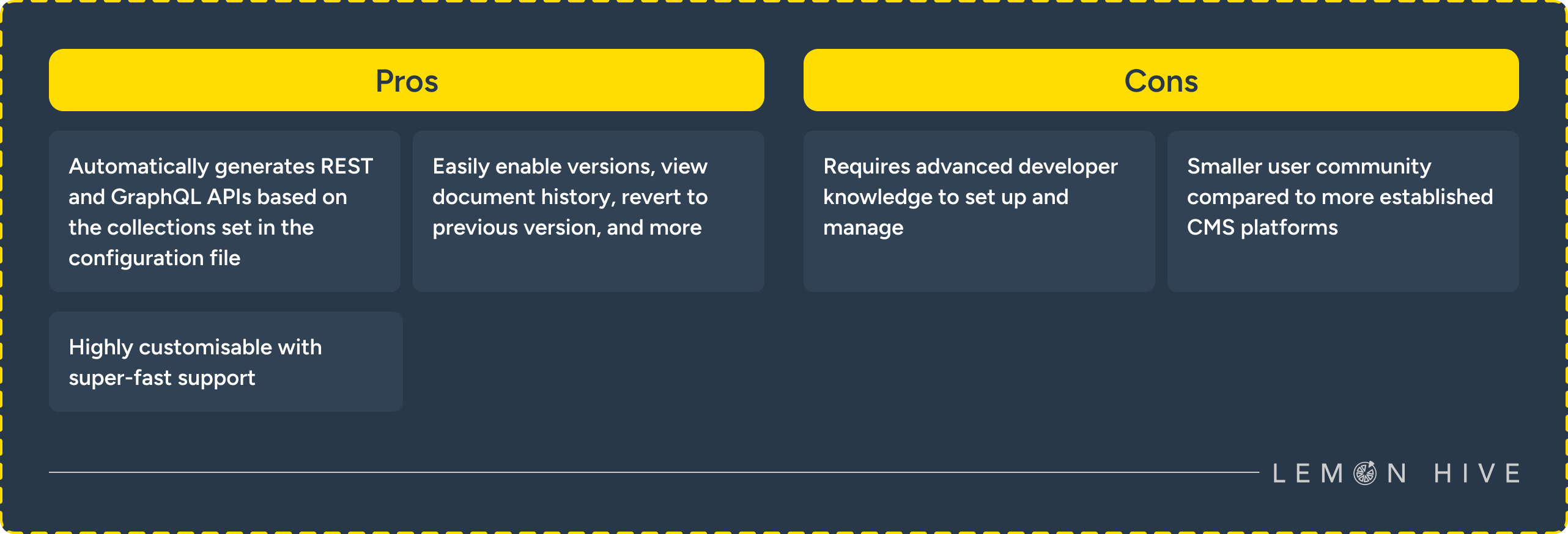
Umbraco & Umbraco Heartcore (Headless Umbraco)
Rating on G2: 4.5
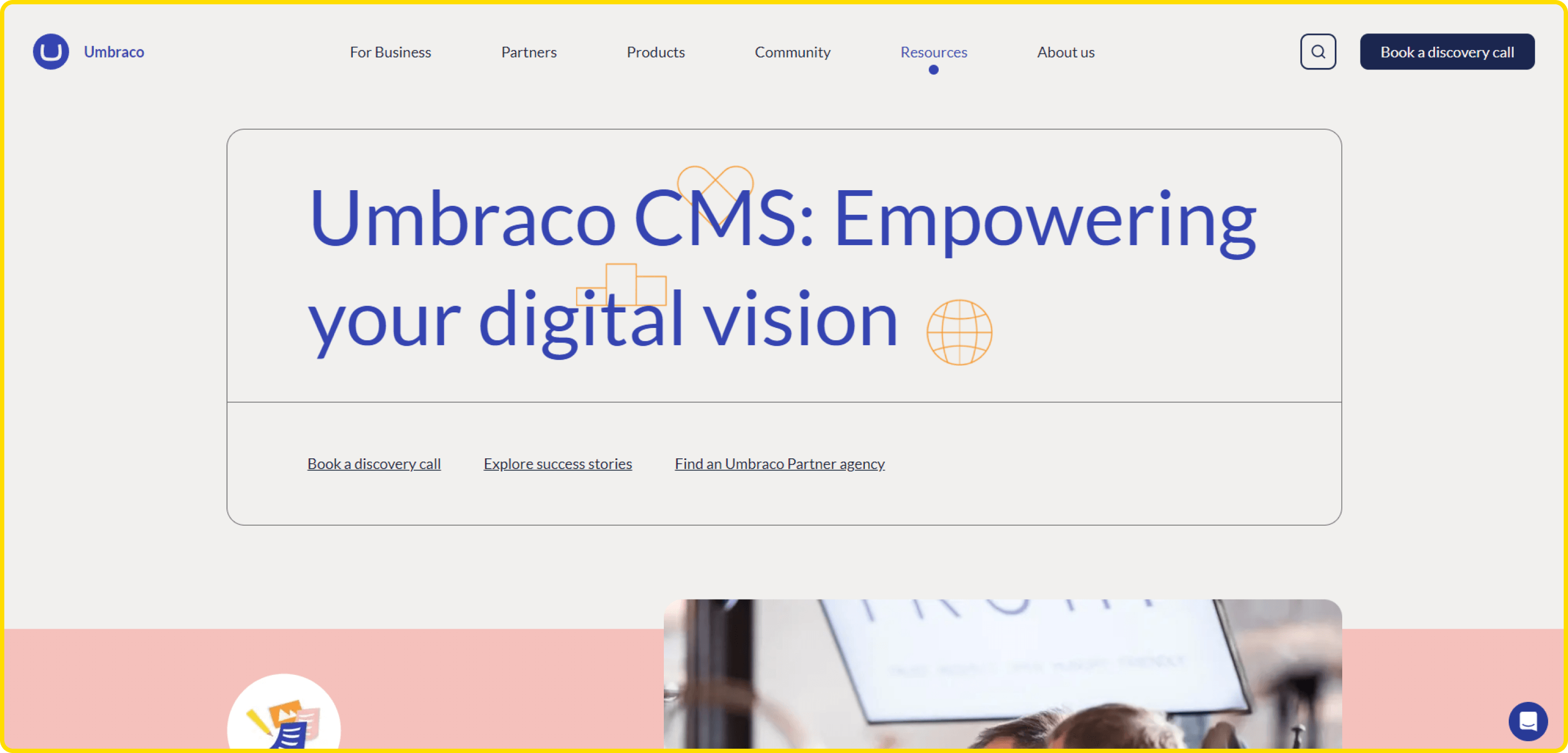
Umbraco is an open-source CMS built on the Microsoft .NET framework, known for its flexibility and user-friendly interface. The Umbraco Heartcore is best suited for developers and enterprises looking for a highly customisable content management system that can scale in the long run. Umbraco Hearcoreoffers cloud hosting options and can be used as Content as a Service in a microservices architecture, making it adaptable to enterprise business needs.
With its strong community support and a wide range of integrations, Umbraco and Umbraco Heartcore is a powerful choice for enterprises that prioritise flexibility and extensibility.
Umbraco pricing:
- Starter: $70/month
- Standard: $300/month
- Professional: $1,200/month
- Heartcore Professional: £900/month
- Hearcore Enterprise: Custom pricing for business-critical, large-scale projects with high demands for support, availability and data transfer capabilities. From roughly £3,000/month
Pros & Cons of Umbraco:
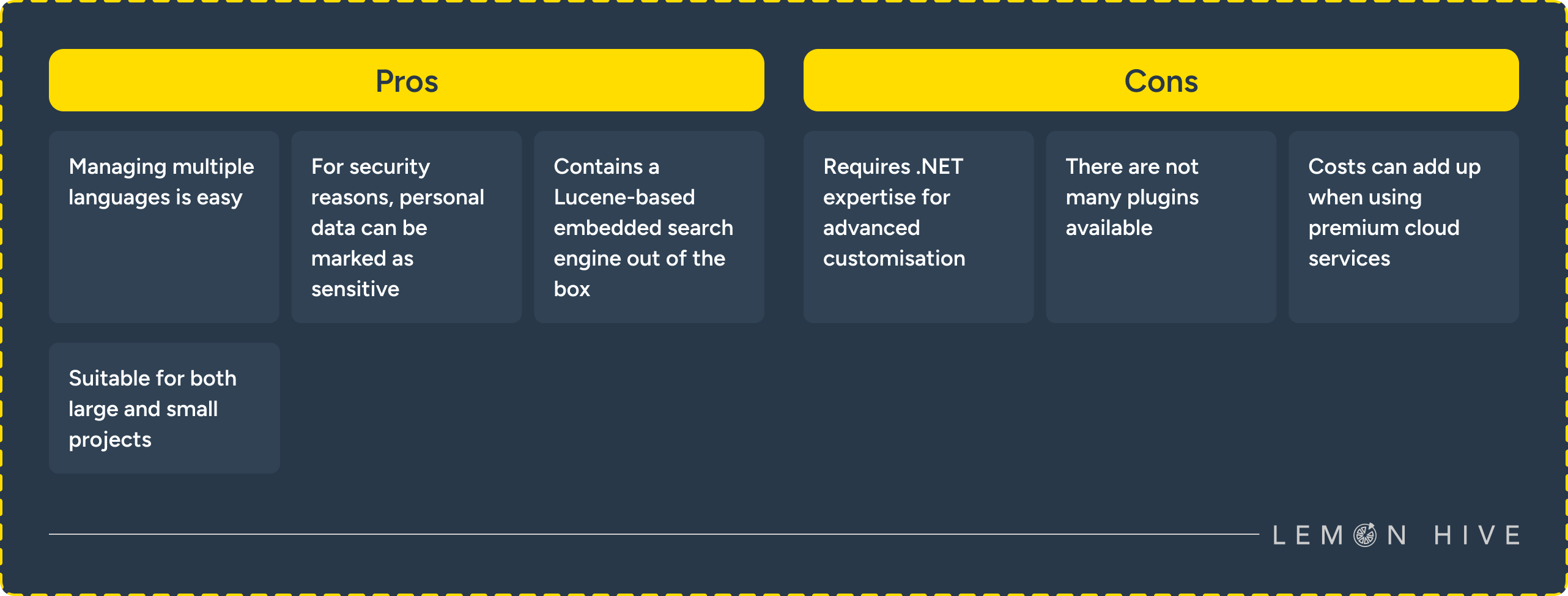
Storyblok: enterprise content management for marketers and developers
Rating on G2: 4.5
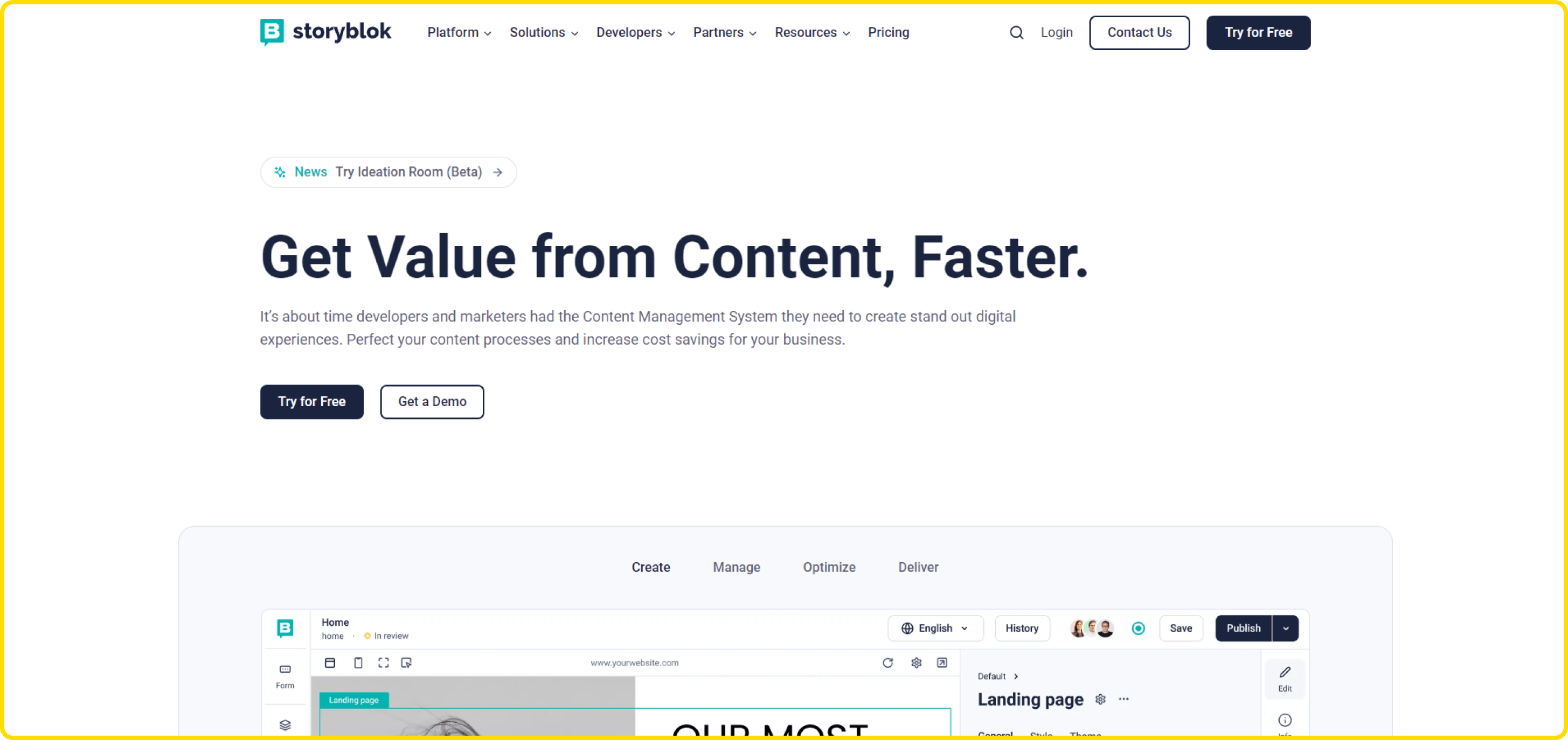
Storyblok is an enterprise-level headless CMS offering flexibility for developers and a real-time Visual Editor for content creators. A component-based approach streamlines content management and reuse across platforms. Storyblok’s front-end agnostic API works with frameworks like React and Vue, supporting interactive digital experiences. Its dual focus on technical capability and marketing agility makes it ideal for advanced omnichannel content strategies across websites, apps, and other digital experiences.
Storyblok pricing:
- Community: Free
- Entry: €99/month
- Business: €849/month
- Enterprise: Custom pricing based on enterprise needs, offering unlimited users and stages, along with enterprise-grade support.
Pros & Cons of Storyblok:

Prismic: excellent web management through Slice Machine and Page Builder
Rating on G2: 4.3
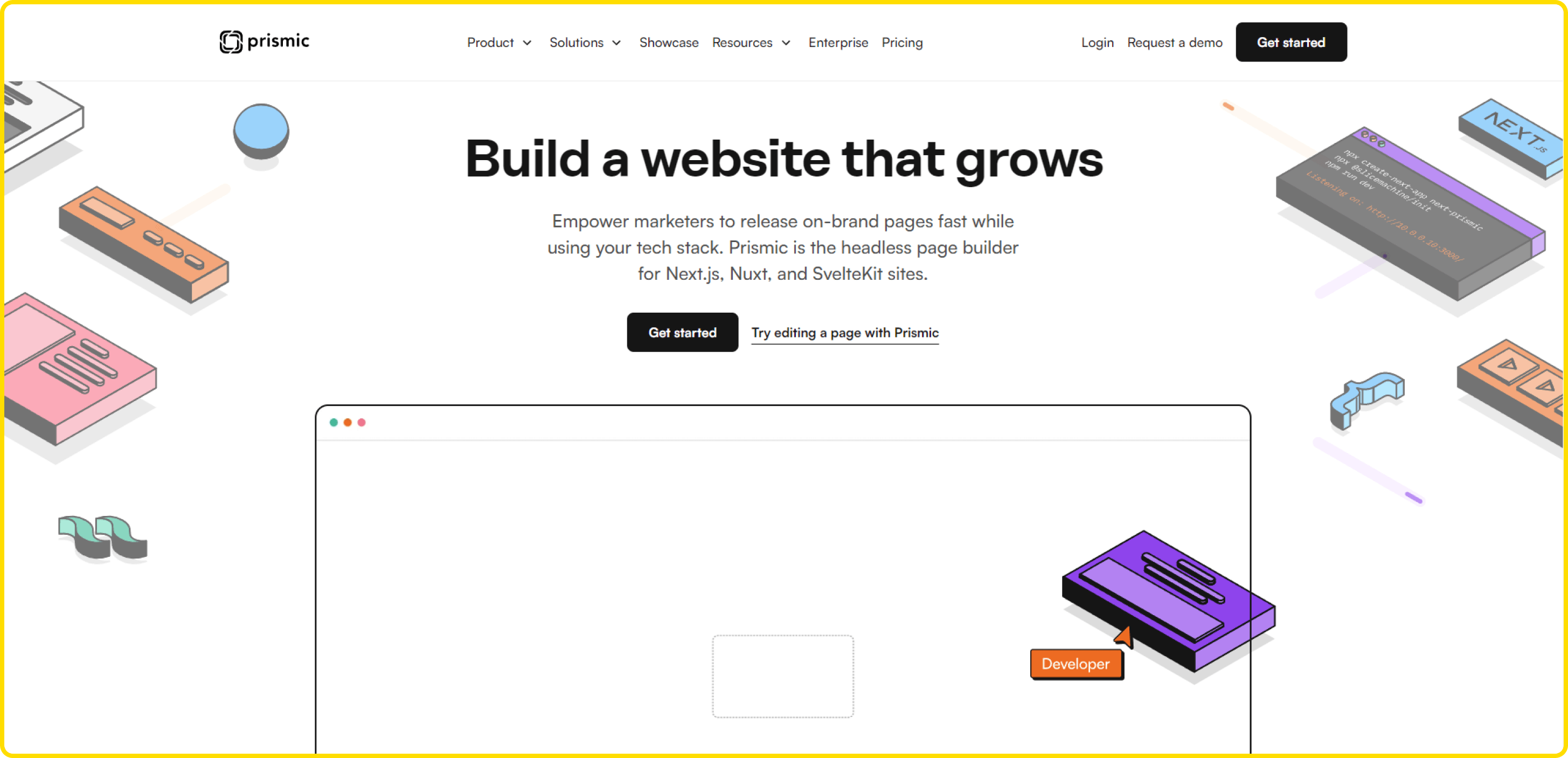
Prismic is a user-friendly headless CMS with an API-first approach. It enables developers to build customisable sites and content teams to manage content easily. It supports scheduling, versioning, and multilingual content and integrates with various front-end technologies. Prismic’s SliceMachine allows reusable content sections, streamlining the process for teams, while its scalable pricing suits organisations of all sizes.
Prismic Pricing:
- Free: $0/month (per repository) for developers building personal websites or a PoC.
- Starter: $15/month (per repository) for teams ready to invest in a website with custom branding.
- Small: $30/month (per repository) for teams who are publishing more and need more users.
- Medium: $180/month (per repository)For teams scaling their content.
- Platinum: $750/month (per repository) for companies continuously adding website features.
- Enterprise: Custom pricing for businesses with high traffic, large teams, and additional security and support needs.
Pros & Cons of Prismic:

Contentstack
Rating on G2: 4.5
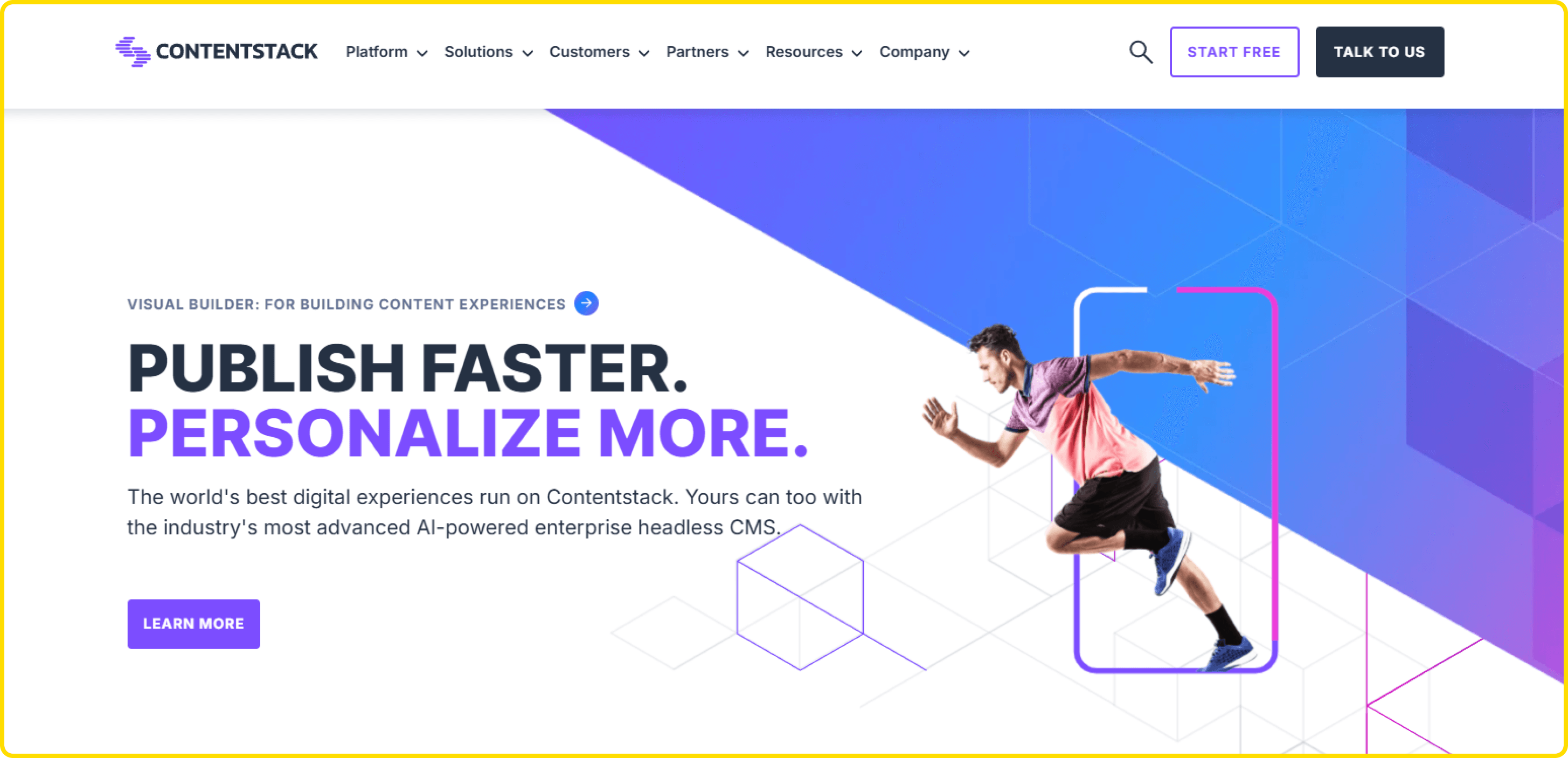
Contentstack is a leading enterprise-grade headless CMS designed for omnichannel digital experiences. It supports a composable, MACH-based architecture (Microservices, API-first, Cloud-native, Headless). It enables seamless collaboration between marketers and developers, offering robust APIs and flexible content delivery across various platforms. With an intuitive interface and high scalability, Contentstack is ideal for businesses needing a powerful, customisable, and performance-focused CMS.
Contentstack Pricing:
- Start: $995/month
- Grow: $4,500/month
- Scale: Custom plan according to enterprise needs.
Pros and Cons of Contentstack:

Agility CMS
Rating on G2: 4.4
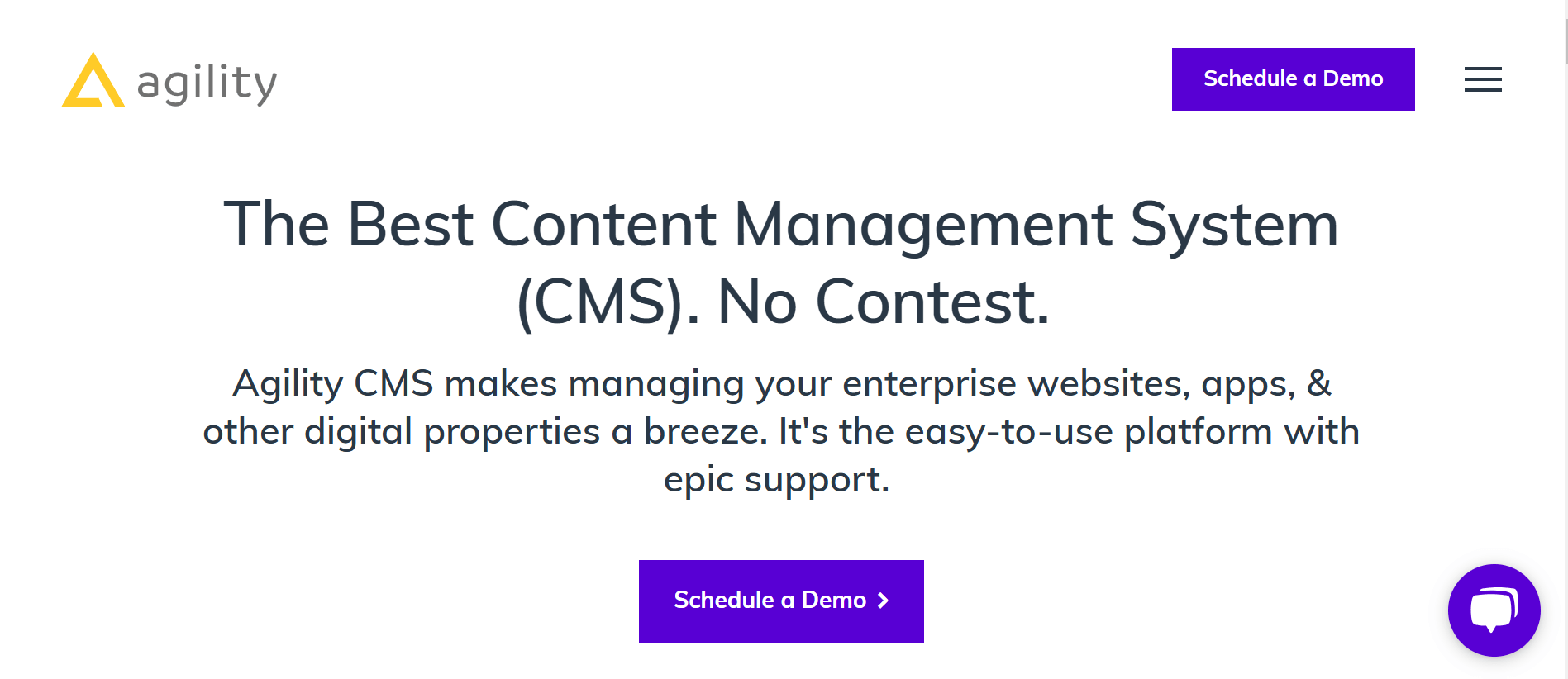
Agility CMS is another headless content platform that combines user-friendly website management with the flexibility of API-first architecture, enabling enterprises to create dynamic, customer-centric digital experiences. Its unique approach simplifies page management for marketers, offering pre-defined templates and modules that allow marketing teams to create and edit pages without developer intervention quickly. Agility supports Jamstack frameworks like Next.js and Gatsby, granting full creative freedom to developers, marketers, and designers for flexible, scalable digital solutions.
Agility CMS Pricing:
- Starter: $1,249 (50,000 entries per month)
- Pro: $2,499 (100,000 entries per month)
- Enterprise: Custom (250,000 entries per month)
Pros and Cons of Agility CMS:

Hygraph
Rating on G2: 4.5
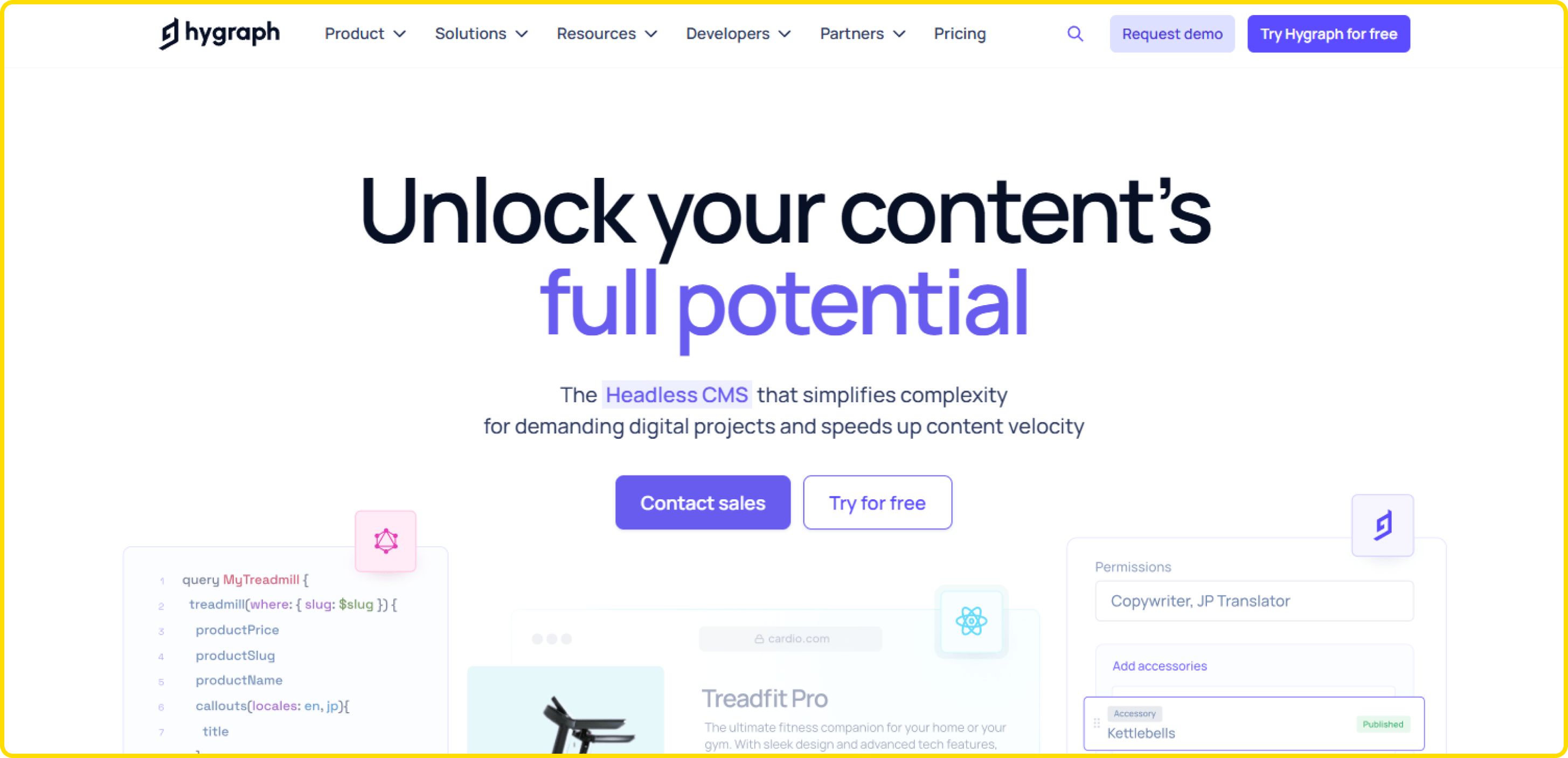
Hygraph, a GraphQL-based headless CMS, enables developers to build flexible, content-rich applications tailored for omnichannel experiences. Its API-first approach supports seamless integration with various platforms, making it ideal for enterprises seeking dynamic, scalable, and multilingual content management solutions with high customisation and performance.
Hygraph Pricing (billed monthly):
- HOBBY: $0 always for individuals building personal projects.
- GROWTH: From $299/month for small businesses looking for a cost-effective CMS.
- ENTERPRISE: Custom pricing for businesses building market-leading applications and looking to scale with dedicated support and governance.
Pros and Cons of Hygraph:

Contentful
Rating on G2: 4.2
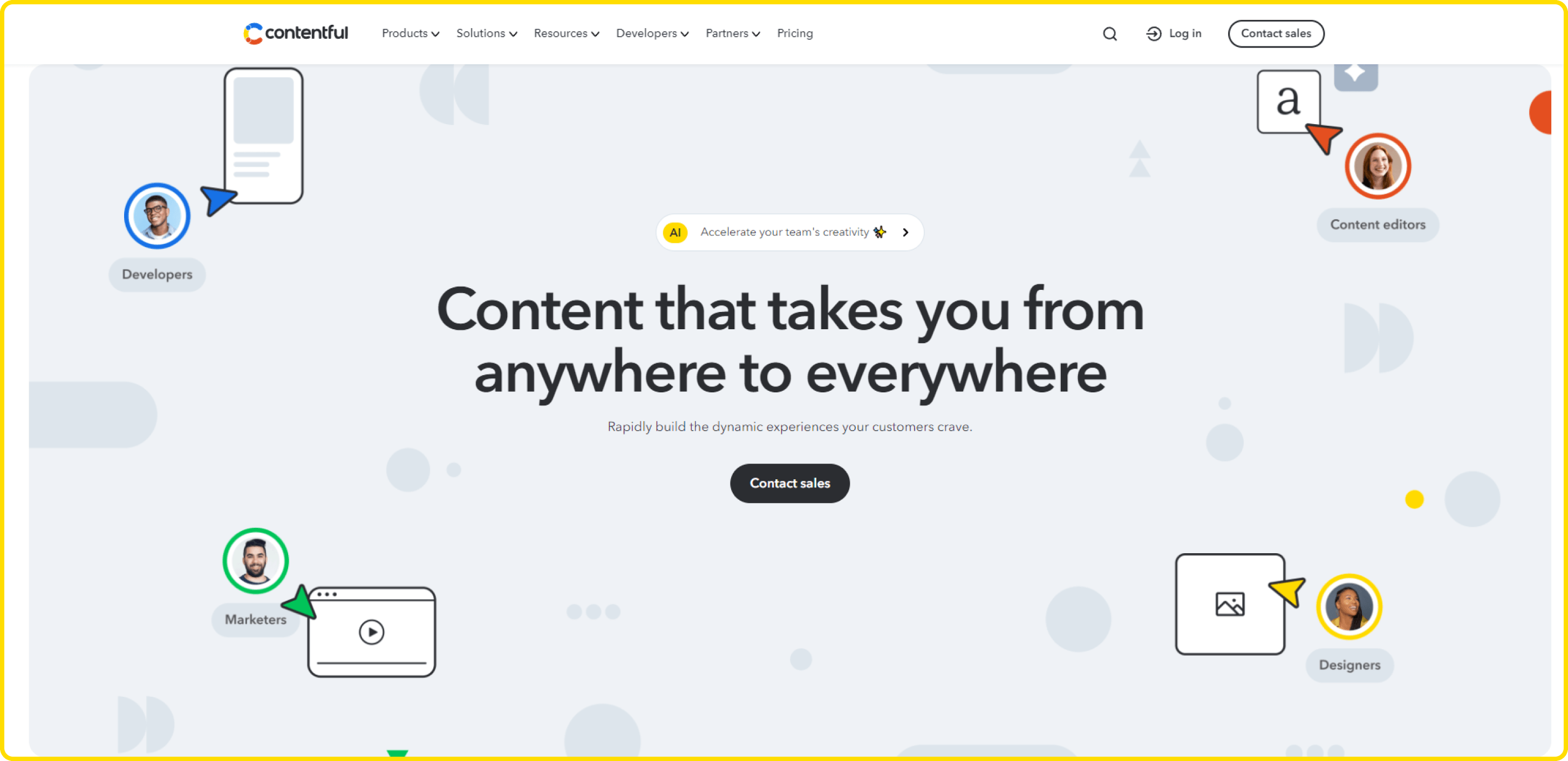
Contentful is a cloud-based headless CMS that enables developers to build customisable, API-driven content experiences while allowing creators to manage content easily. Ideal for omnichannel digital strategies, it supports real-time updates, integrates with any front-end, and offers scalability, making it a strong choice for businesses seeking flexible, dynamic content management across all devices.
Contentful Pricing (Platform):
- Free: $0forever for developers and marketers building individual projects.
- Basic: $300/month for teams building sites, apps, and multichannel experiences.
- Premium: Custom/year for enterprise businesses building scaled digital experiences.
Pros and Cons of Contentful:

Adobe Experience Manager (AEM)
Rating on G2: 4.0
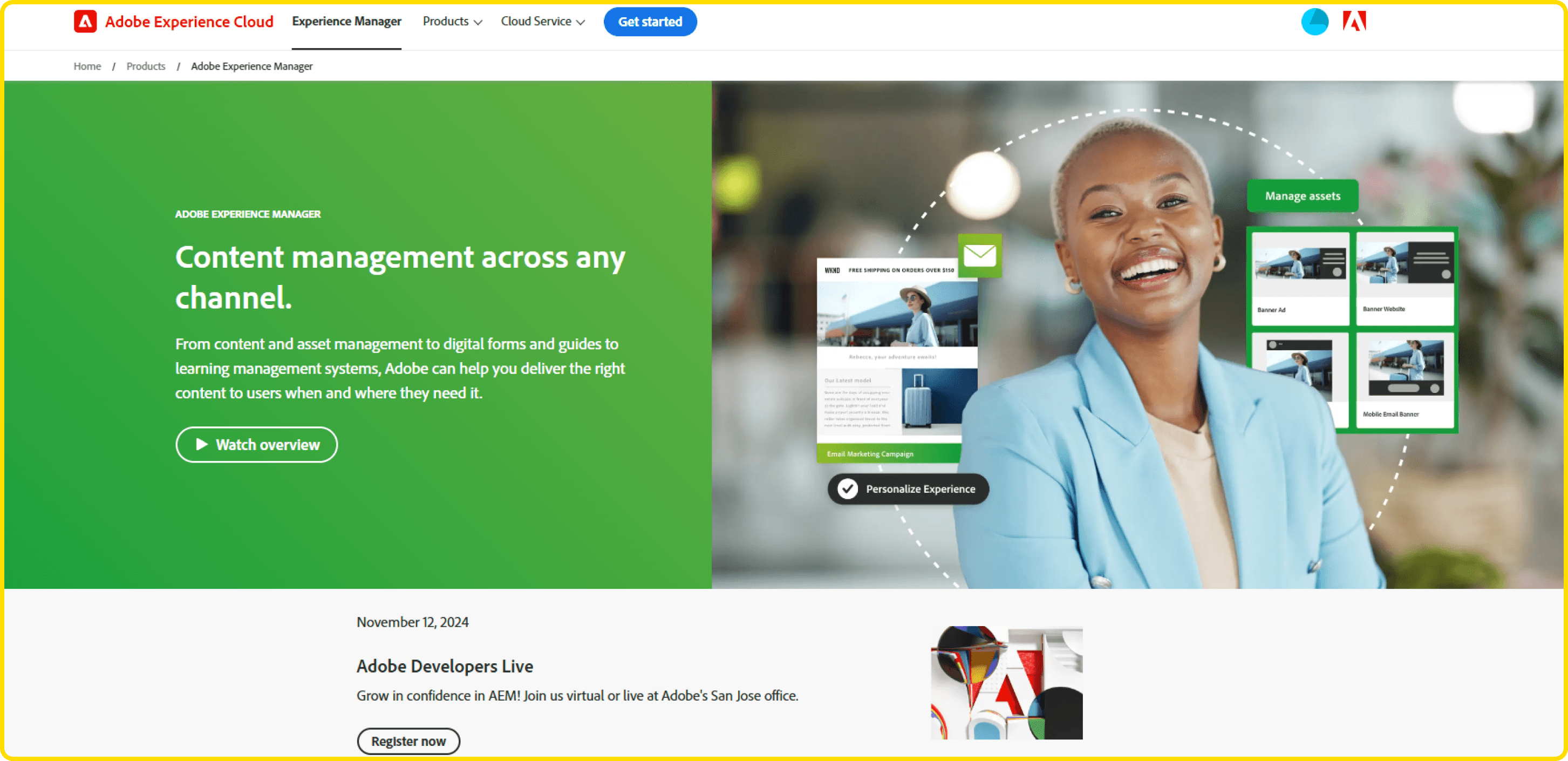
Adobe Experience Manager (AEM) is a comprehensive enterprise-grade content management solution that integrates content creation, digital asset management, and personalised marketing capabilities. Part of the Adobe Experience Cloud, AEM is highly scalable and tailored for large organisations looking to deliver seamless, omnichannel digital experiences. It enables enterprises to manage websites, mobile apps, and digital content across various platforms while leveraging advanced features like content automation, personalisation, and AI-driven insights. AEM is well-suited for businesses that need robust content management paired with marketing tools for a unified customer experience.
AEM Pricing:
- Custom pricing
Pros and Cons of AEM:
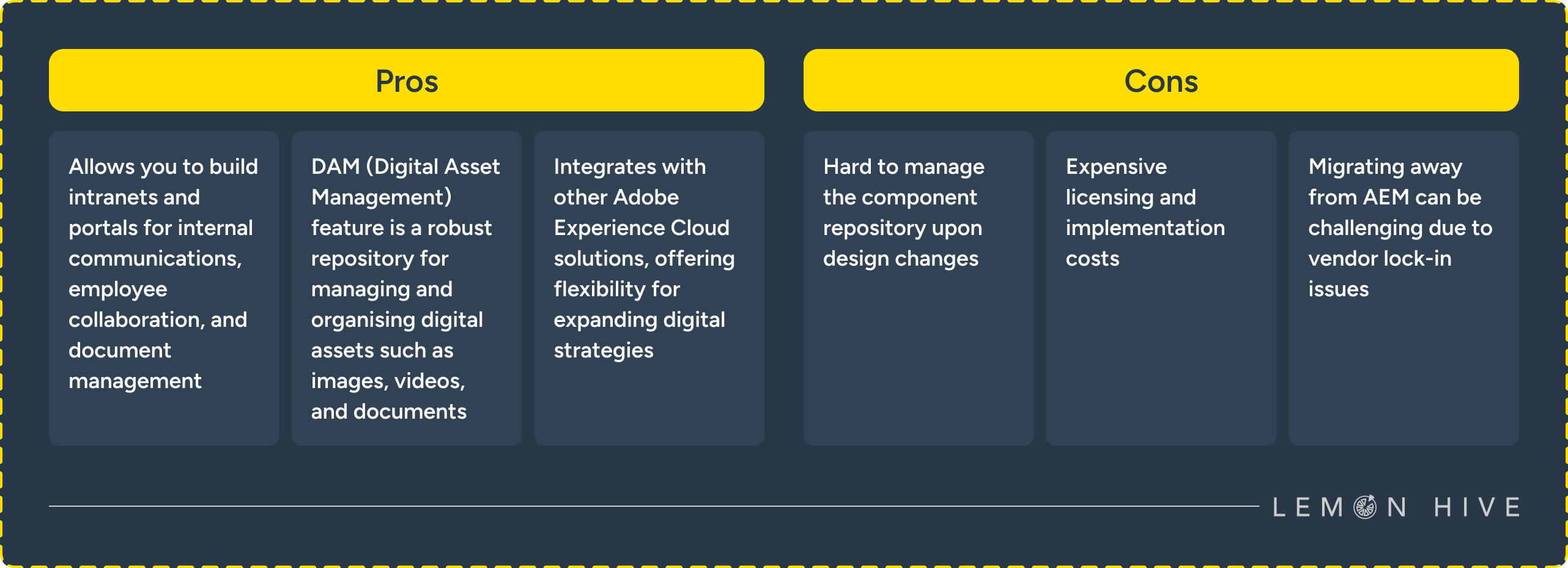
Final Thoughts
In conclusion, choosing the right CMS can significantly impact your enterprise’s digital success. Producing the best long-term solution should be a thoughtful process with a full and well-planned discovery period. Each alternative we’ve discussed has strengths, from Sanity’s flexibility to Adobe Experience Manager’s advanced features.
